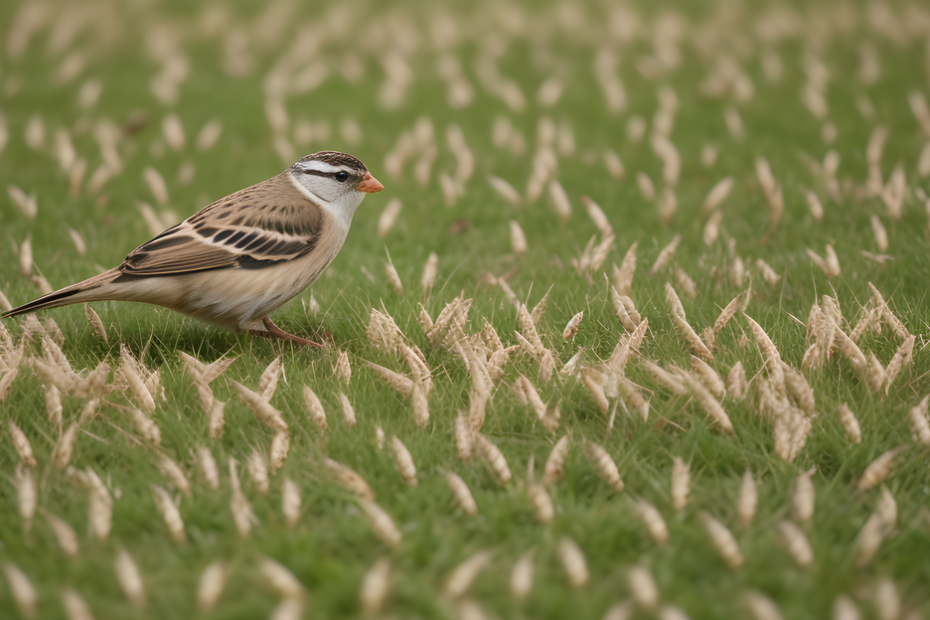Key Takeaways
- Understanding bird behavior and grass seed predation is essential for implementing effective bird control measures.
- Select bird-resistant grass seed varieties to minimize the risk of bird damage to your grass seed.
- Time your grass seeding to avoid peak bird activity, increasing the chances of successful germination.
- Utilize fine mesh netting and mulch as protective measures to protect grass seed from bird predation.
- Implement visual deterrents with reflective materials, and noise deterrents, and use straws to scare birds away from the seeded area.
- Consider using scarecrows and straw as additional effective bird control methods.
Introduction
Ever planted grass seed only to find it ravaged by birds? Fret not, as I’ve got you covered. In this post, I’ll divulge foolproof methods to safeguard your precious grass seed from those pesky feathered creatures using bird netting and bird deterrents. We all know the frustration of meticulously sowing seeds, only for them to become a feast for winged intruders. By implementing simple yet effective strategies, you can bid adieu to bird-inflicted lawn woes and nurture your grass seed into lush greenery without interference.
From tried-and-true physical barriers to natural deterrents, I’ll walk you through a range of tactics that will leave those birds scratching their heads instead of pecking at your lawn. So, if you’re tired of playing defense against avian invaders in your yard, read on for some game-changing tips and tricks.
How to Protect Grass Seed from Birds?
Attraction to Freshly Seeded Areas
Birds are naturally attracted to freshly seeded areas because they perceive them as a potential source of food. The sight of exposed soil and scattered seeds signals an abundant feeding ground for birds. This attraction is particularly strong in the case of small birds that feed on seeds, making freshly sown grass vulnerable to predation.
Understanding this behavior is crucial in developing effective bird control strategies. By recognizing why birds are drawn to these areas, you can begin to implement methods that deter them without causing harm.
Recognizing Specific Threatening Bird Species
Recognizing the specific bird species that pose a threat to grass seed can inform prevention methods. For instance, small ground-feeding birds such as sparrows and finches are known culprits. Identifying these species allows you to tailor your preventive measures accordingly.
One way I’ve found helpful in dealing with this issue is by using physical barriers like floating row covers or netting over the seeded area. These barriers prevent access for ground-feeding birds while still allowing sunlight, air, and moisture penetration for healthy seed growth.
Another method I’ve tried involves using decoy predators or scare devices specifically designed to deter small birds from feeding on grass seed. Placing fake predators like owls or installing reflective tape near the seeding area can create an environment where birds feel unsafe and avoid landing there altogether.
Selecting Bird-Resistant Grass Seed Varieties
Natural Deterrents
When choosing grass seed varieties, it’s essential to look for those with natural deterrents that can reduce bird predation. Some grass species produce compounds or chemicals that birds find unappealing, deterring them from consuming the seeds. For example, endophyte-enhanced fescue contains fungal endophytes that naturally repel certain bird species.
Selecting grass seeds coated with substances like capsaicin can make them less appealing to birds. Capsaicin is the compound responsible for the “heat” in chili peppers and acts as a bird deterrent when applied to grass seeds. Coated seeds are often designed to prevent ingestion by birds and other animals due to their taste or smell.
Thicker Husks
Another effective strategy is opting for grass seed varieties with thicker husks. Birds are less likely to consume seeds with tougher outer coverings because they require more effort and energy to access the nutritious interior. For instance, some types of Bermuda grass have thicker husks which provide an additional layer of protection against avian predation.
In my experience, I’ve found that choosing grass seed varieties specifically bred for resistance against local bird species has greatly reduced the chances of predation on newly planted areas in my garden. Consulting with local agricultural extension services can provide valuable insights into which grass seed varieties are best suited for deterring common avian pests in your region.
Timing Your Grass Seeding to Avoid Peak Bird Activity
Understanding Bird Behavior
Birds are most active during specific times of the day, such as early morning and late afternoon. During these periods, they forage for food, including new lawn grass seeds. It’s crucial to be aware of local bird migration patterns to determine when there is a higher risk of seed consumption. By understanding the habits of birds in your area, you can strategically plan your grass seeding to minimize bird interference.
Timing your grass seeding with consideration for bird behavior can significantly reduce the risk of seed consumption by birds. For instance, if you’re planning to establish a new lawn, it’s advisable to avoid seeding during peak bird feeding times. By doing so, you can protect the freshly planted seeds from being eaten by birds that are actively searching for food.
It’s important to remember that different types of birds have varying feeding patterns and behaviors. Some species may be more attracted to open spaces like lawns while others prefer wooded areas or gardens. Understanding which types of birds frequent your area and their typical feeding routines can help in determining the best time for landing new grass seeds.
Strategic Scheduling
Strategic scheduling plays a crucial role in protecting new lawn grass seeds from birds’ consumption. When planning your grass seeding project, consider choosing a time when there is minimal bird activity in your surroundings. This could involve avoiding seasons or months known for heavy bird migration or nesting activities.
Moreover, paying attention to weather patterns is also essential when scheduling grass-seeding activities. Opting for days with lower wind speeds can prevent seeds from being easily carried away by gusts and make them less accessible to ground-feeding birds.
Utilizing physical barriers such as lightweight netting or mesh covers can provide an added layer of protection against avian interference with newly seeded areas without impeding germination and growth processes.
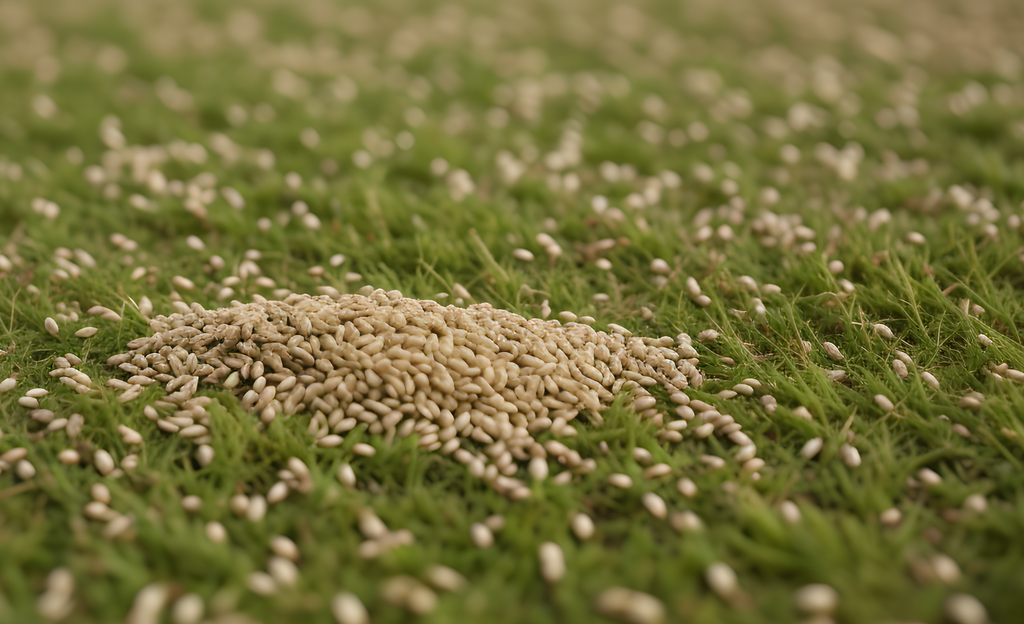
Utilizing Physical Barriers Like Nets and Mulch
Mesh Netting
One of the effective methods to protect grass seed from birds is by using fine mesh netting. This thin layer of protective barrier can physically prevent birds from accessing the newly seeded areas. The netting acts as a shield, creating a barrier that deters birds from reaching the seeds underneath.
Using mesh netting over the seeded areas serves as one of the most practical strategies to safeguard grass seed from bird predation. The fine mesh structure makes it difficult for birds to access the area, allowing the seeds to germinate undisturbed. This approach doesn’t harm or disturb other plant life in your garden or lawn.
I remember when I used mesh netting for my newly seeded lawn; it was incredibly effective in keeping pesky birds away from disturbing the seeds’ growth process. It provided peace of mind knowing that my efforts wouldn’t go to waste due to bird interference.
Mulch Application
Applying a layer of mulch over newly seeded areas is another highly recommended method for protecting grass seed from birds. The use of straw mulch or any other type of mulch creates an additional physical barrier that hinders bird access and prevents them from consuming or scattering the seeds.
The application of mulch serves as a protective measure against bird predation, acting as an effective deterrent by making it harder for birds to reach and consume grass seed. This simple yet impactful tactic ensures that your newly planted grass has a better chance at successful germination without being disturbed by avian visitors.
When I applied straw mulch over my freshly seeded lawn, I noticed a significant decrease in bird activity around those areas. It was reassuring to see how this simple step could make such a big difference in protecting the vulnerable seeds during their crucial early stages.
Implementing Visual Deterrents with Reflective Materials
Placing Reflective Materials
Placing reflective materials in the seeded area can create visual disturbances that deter birds. Shiny surfaces like CDs or aluminum foil strips hung around the garden catch and reflect light, creating a disorienting effect for birds. This technique utilizes light to create an environment that deters birds from approaching the grass seed.
Utilizing scare tape with reflective properties is another effective method to protect grass seed from birds. The movement of this tape in the wind combined with its reflective surface creates a dynamic deterrent for birds. When properly implemented, these deterrents can significantly reduce bird interference and protect newly seeded areas.
I’ve found that hanging CDs on strings throughout my garden effectively prevents birds from disturbing my freshly planted grass seeds. The flashing reflections from the CDs grab their attention and keep them away from the vulnerable seeds.
Disorientation and Scare Tactics
Hanging shiny objects like CDs or aluminum foil strips can disorient and scare off birds. These items reflect light in various directions, creating an unpredictable environment for birds flying near the seeded area. As a result, they are less likely to land or linger in an area where these reflective materials are present.
The use of reflective elements not only distracts but also startles unwanted avian visitors by disrupting their usual flight paths using unexpected flashes of light. This simple yet effective technique capitalizes on natural elements to discourage bird interference without causing harm to them.
In addition to utilizing physical barriers such as nets and mulch, incorporating visual deterrents has been crucial in safeguarding my lawn against bird damage during the seeding season.
Employing Noise Deterrents to Scare Birds Away
Using Noise Deterrents
Birds can be deterred from consuming grass seed by using noise deterrents. Wind chimes, for instance, create a constant sound that can disrupt bird activity around seeded areas. Ultrasonic devices emit high-frequency sounds that are uncomfortable for birds and discourage them from approaching the grass seed.
Implementing motion-activated sound devices is another effective way to protect the grass seed from birds. These devices produce sudden noises when they detect movement, startling and deterring birds from consuming the seeds. By employing such bird deterrents, it’s possible to significantly reduce bird-related damage to newly planted grass.
I’ve found that playing recorded predator calls or distress signals can also effectively discourage birds from approaching the area where grass seed has been sown. The sounds of predators or distressed animals create an environment of perceived danger for the birds, prompting them to stay away from the seeded areas.
Benefits of Noise Deterrents
Using noise deterrents offers several benefits in protecting grass seeds from birds. Firstly, it provides a non-harmful method of keeping birds at bay without causing any harm to them. Secondly, these methods are often cost-effective and easy to implement compared to other bird control solutions.
One personal experience I’ve had with noise deterrents involved setting up wind chimes around my garden after seeding it with new grass. The gentle tinkling sound created by the wind chimes not only added a soothing ambiance but also effectively kept pesky birds away from pecking at my freshly laid seeds.
Installing Motion-Activated Sprinklers as a Deterrent
Startling Effect
Motion-activated sprinklers are an effective way to protect grass seed from birds. When birds approach the seeded area, the sudden burst of water startles them, creating an aversion and discouraging feeding.
These sprinklers utilize motion sensors to detect bird activity and respond by releasing a quick burst of water. This action surprises the birds, making them associate the seeded area with an unpleasant experience, thus deterring their interest in feeding there.
Installing motion-activated sprinklers near freshly seeded areas can disrupt bird behavior patterns and discourage them from feeding on the grass seed. As a result, this method effectively protects the newly planted seeds from being consumed by birds.
Water as a Deterrent
Using water as a deterrent through motion-activated sprinklers can be highly effective in protecting grass seeds from birds. The sudden release of water creates an unexpected obstacle for birds seeking to feed on the seeds.
The presence of these sprinkler systems near seeded areas alters the environment for birds, making it less appealing for them to continue attempting to access food sources there. This change in their surroundings prompts them to seek alternative locations for feeding, away from the protected grass seed.
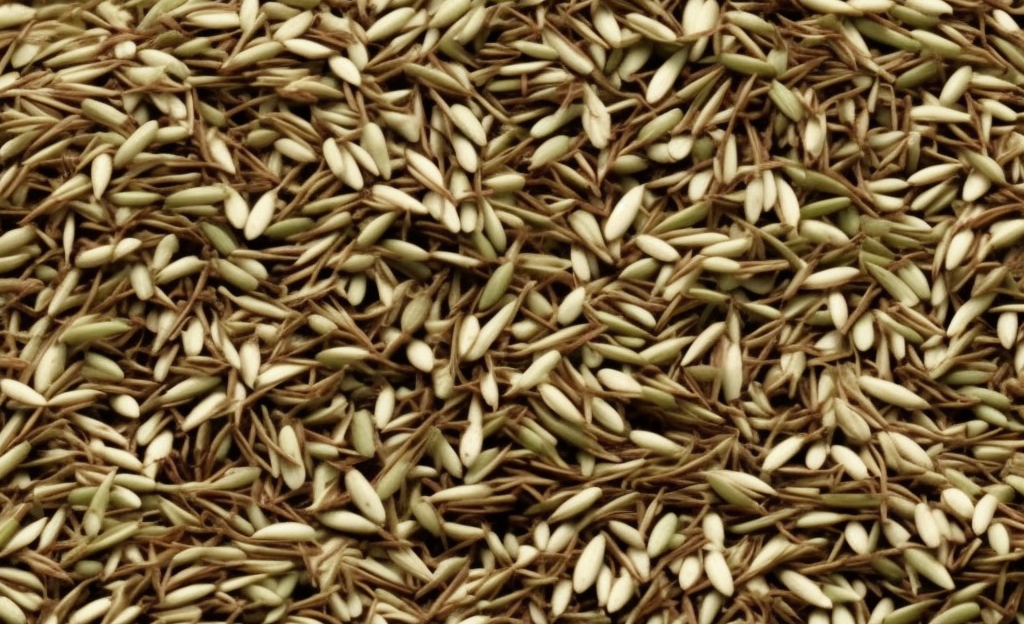
Disrupting Feeding Patterns
Employing timed sprinkler systems near seeded areas is crucial in disrupting bird feeding patterns. By activating at specific intervals throughout the day or night, these sprinklers consistently deter birds from approaching and consuming grass seed.
This disruption forces birds to seek other sources of food that are not safeguarded by motion-activated sprinklers. Consequently, they gradually lose interest in returning to areas where they have experienced discomfort due to sudden bursts of water.
In my experience with protecting grass seeds from birds using motion-activated sprinklers, I found that strategic placement played a significant role in maximizing effectiveness. Placing these devices at different angles around the targeted area ensured comprehensive coverage and deterrence against various bird species.
Setting Up Decoys and Scarecrows for Effective Bird Control
Placing Decoy Predators
Placing decoy predators like owls or hawks near the seeded area can intimidate birds and prevent predation. These decoys create a sense of danger, prompting birds to seek safer feeding grounds. For instance, positioning a fake owl in the garden can deter small birds from approaching the grass seed.
Utilizing scarecrows with reflective features can create a visual deterrent for birds in the vicinity. The reflective elements on scarecrows mimic movement, making it appear as if someone is present in the area. This deters birds from landing and feeding on the exposed seeds.
Rotating Placement Regularly
Rotating the placement of decoys and scarecrows regularly enhances their effectiveness in deterring birds. Birds are intelligent creatures that quickly adapt to their environment; therefore, changing up the positions of these deterrents prevents them from becoming accustomed to their presence. By moving these items around every few days, you maintain an element of surprise that keeps birds away from your grass seed.
In my experience, I’ve found that using decoy predators such as plastic owls or hawk replicas has been quite effective in keeping smaller birds away from newly planted grass seeds. I’ve noticed that adding some shiny objects or aluminum foil strips to my scarecrow’s clothing makes it more effective at scaring off unwanted visitors.
Covering Seeds with Burlap or Fleece for Protection
Physical Barrier
Covering seed with burlap or fleece creates a physical barrier that prevents birds from accessing and consuming the newly seeded areas. This method effectively safeguards the seeds from bird predation, ensuring their undisturbed growth. The thick, woven texture of burlap and the dense structure of garden fleece act as deterrents against birds.
Burlap or fleece acts as a protective shield over the grass seeds, preventing direct access by birds and other animals. By securing these materials over the freshly planted areas, gardeners can ensure that birds are unable to reach and consume the seeds. This protection is especially crucial during the initial stages when seeds are most vulnerable to external threats.
I find it helpful to cover my newly seeded areas with burlap until germination occurs, providing an effective defense against bird consumption. This approach has significantly improved my success rate in growing healthy grass without interference from birds.
Reduced Risk During Germination
The practice of covering seeds with burlap or fleece until germination plays a vital role in reducing the risk of bird consumption during this critical phase. Birds often target freshly sown seeds due to their high nutritional value, posing a threat to successful germination and growth. By maintaining coverage over these areas until germination takes place, gardeners can effectively minimize this risk.
During my own gardening experiences, I’ve noticed that using burlap or garden fleece to cover new seedlings until they have fully established themselves has been highly beneficial in protecting them from being eaten by birds.
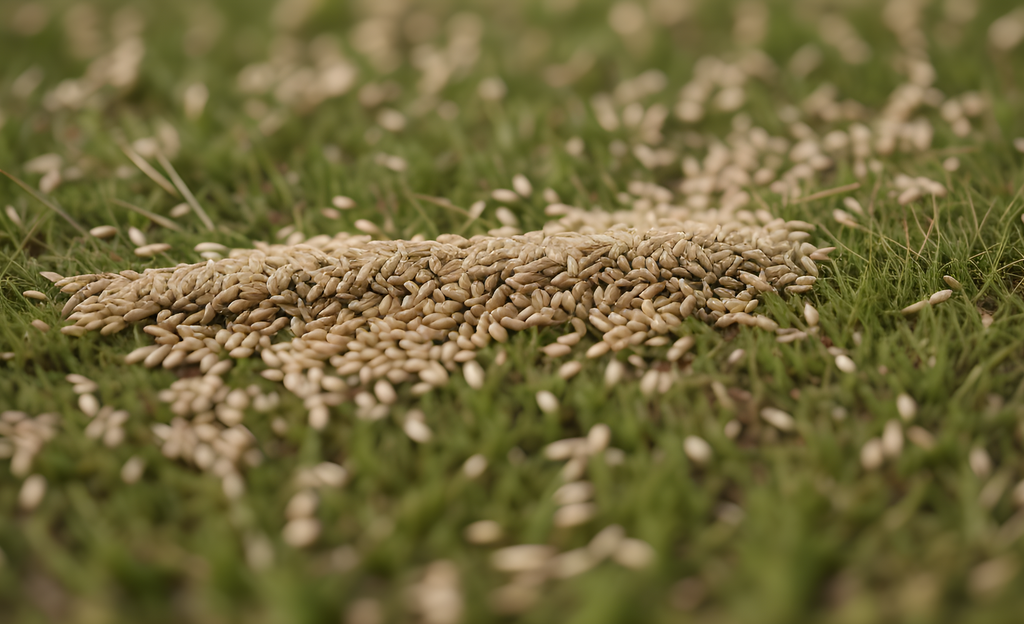
Summary
After exploring various strategies to protect grass seed from birds, it’s clear that a combination of tactics yields the best results. Understanding bird behavior and selecting the right grass seed varieties are crucial first steps. Timing the seeding process to avoid peak bird activity, and utilizing physical barriers, visual deterrents, noise deterrents, motion-activated sprinklers, and decoys or scarecrows all play vital roles in effective bird control. Covering seeds with burlap or fleece also provides an added layer of protection. By implementing these methods, we can safeguard our grass seed and ensure successful growth.
Incorporating these bird protection techniques when planting grass seed can make a significant difference in the outcome. Let’s take proactive steps to protect our grass seed from birds and enjoy a lush, thriving lawn. Remember, a little effort now can lead to a beautiful landscape later on.
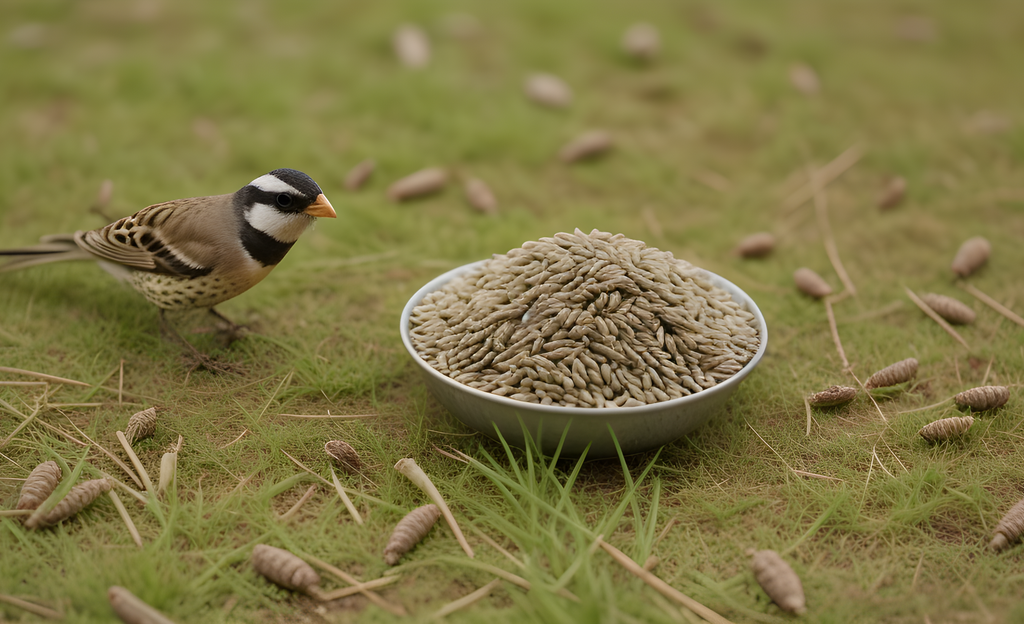
Frequently Asked Questions
How do birds typically affect grass seed germination?
Birds can disrupt the process of grass seed germination by feeding on the seeds, which can result in poor or uneven growth. Understanding bird behavior and implementing deterrents are essential to protect the grass seed.
What are some effective methods for protecting grass seed from birds?
Utilizing physical barriers like nets and mulch, employing noise deterrents, setting up decoys and scarecrows, and covering seeds with burlap or fleece are all effective methods for protecting grass seeds from birds.
When is the best time to sow grass seed to avoid peak bird activity?
Sowing grass seed during periods when bird activity is minimal, such as early morning or late evening, can help minimize predation. Timing your seeding appropriately can significantly reduce the risk of bird damage.
Are there specific types of grass seeds that are more resistant to bird predation?
Selecting bird-resistant varieties of grass seed can be a proactive approach to minimizing bird damage. Certain varieties have properties that make them less appealing to birds, providing an added layer of protection.
What visual deterrents can be used to discourage birds from feeding on grass seeds?
Implementing visual deterrents with reflective materials such as shiny objects or scare tape can effectively deter birds by creating an environment they find unappealing or threatening. This method capitalizes on disrupting their comfort zone without causing harm.
